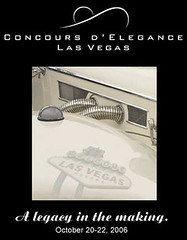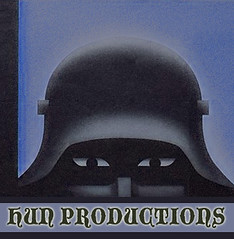rPerhaps it is because I tuned into the show American Inventor, but I find myself wondering if business owners are forgetting that focus groups and customer surveys, while helpful, are not meant to be mini-product development sessions. Watching this show, you might think otherwise as the contestants, ordinary people with good ideas, strain under the advice of focus groups that, in some cases, aren't even representative of the right target audience.
Case in point: one inventor was shocked to hear that a car seat capable of saving a child's life was not aesthetically pleasing enough to purchase. While the inventor couldn't believe his ears, I couldn't believe my eyes. This focus group participant was obviously single and without kids. Of course, from there, the product became fair game and every participant suddenly had two cents despite a lack of common sense.
Come on. Surely if you asked a focus group, let's say, whether they would buy water in a glass bottle for 4 times the amount of other bottled water, they would have laughed in your face. Yet, Perrier stands up as one of the best marketing success stories of all times.
So why does this happen? Simple. Evidence has always suggested that focus group participants lie. As Harvard Business School professor Gerald Zaltman wrote in his book "How Customers Think:" The correlation between stated intent and actual behavior is usually low and negative. In fact, 80 percent of new products or services fail within six months when they've been vetted through focus groups. Hollywood films and TV pilots--virtually all of which are screened by focus groups--routinely fail in the marketplace.
First of all, they're usually volunteers, people predisposed to participate (not so ordinary consumers). Second, in a focus group setting, they are influenced by others around them. It only takes one seemingly confident person to sway the group. Third, they are often motivated to participate for reasons other than offering 'honest' opinions. Fourth, they are usually asked to make snap judgments. And fifth, most focus groups are not subjected to months of behavior-changing communication.
Right. Perrier was successful not because it had the best water, but because it entered the market at a time when consumers were status conscious and said: hey, this water is for people with status, thus the French name. Cool, eh? Cool enough that as the consumers changed their behavior (largely because of other great marketing strategies), Perrier can now be purchased in a plastic water bottle.
Don't get me wrong. Focus groups can be a useful tool. But, at the end of the day, they are only one tool among many. Not to mention, once all the data is gathered, assuming there was no bias to begin with, it needs to be sorted, qualified, and applied properly.
Polls are no different. As Joe Klein wrote for Time magazine a couple of years ago: The vast majority of Americans--as many as 90 percent, pollsters told him privately--refuse to answer questions when the wizard calls (although the number is marginally better this hot election year); people who use cell phones exclusively, mostly younger voters, are unreachable; and wizards frequently 'correct' for these things, by "weighting" their polls.
Wow! Does that mean polling is less scientific and more speculative than ever? Maybe a poll will would provide the answer. And if not, a focus group could do the trick. Ahem.
Case in point: one inventor was shocked to hear that a car seat capable of saving a child's life was not aesthetically pleasing enough to purchase. While the inventor couldn't believe his ears, I couldn't believe my eyes. This focus group participant was obviously single and without kids. Of course, from there, the product became fair game and every participant suddenly had two cents despite a lack of common sense.
Come on. Surely if you asked a focus group, let's say, whether they would buy water in a glass bottle for 4 times the amount of other bottled water, they would have laughed in your face. Yet, Perrier stands up as one of the best marketing success stories of all times.
So why does this happen? Simple. Evidence has always suggested that focus group participants lie. As Harvard Business School professor Gerald Zaltman wrote in his book "How Customers Think:" The correlation between stated intent and actual behavior is usually low and negative. In fact, 80 percent of new products or services fail within six months when they've been vetted through focus groups. Hollywood films and TV pilots--virtually all of which are screened by focus groups--routinely fail in the marketplace.
First of all, they're usually volunteers, people predisposed to participate (not so ordinary consumers). Second, in a focus group setting, they are influenced by others around them. It only takes one seemingly confident person to sway the group. Third, they are often motivated to participate for reasons other than offering 'honest' opinions. Fourth, they are usually asked to make snap judgments. And fifth, most focus groups are not subjected to months of behavior-changing communication.
Right. Perrier was successful not because it had the best water, but because it entered the market at a time when consumers were status conscious and said: hey, this water is for people with status, thus the French name. Cool, eh? Cool enough that as the consumers changed their behavior (largely because of other great marketing strategies), Perrier can now be purchased in a plastic water bottle.
Don't get me wrong. Focus groups can be a useful tool. But, at the end of the day, they are only one tool among many. Not to mention, once all the data is gathered, assuming there was no bias to begin with, it needs to be sorted, qualified, and applied properly.
Polls are no different. As Joe Klein wrote for Time magazine a couple of years ago: The vast majority of Americans--as many as 90 percent, pollsters told him privately--refuse to answer questions when the wizard calls (although the number is marginally better this hot election year); people who use cell phones exclusively, mostly younger voters, are unreachable; and wizards frequently 'correct' for these things, by "weighting" their polls.
Wow! Does that mean polling is less scientific and more speculative than ever? Maybe a poll will would provide the answer. And if not, a focus group could do the trick. Ahem.


















